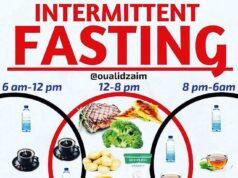By Our Writer
On September 9, 2018, Honoranta Nakato gave birth to quintuplets (fi ve babies) at Women’s Hospital International and Fertility Centre, Bukoto (WHI&FC). The 46-year-old breast cancer survivor had tried but failed on various attempts to conceive. She thought she was barren until an assisted reproductive technique was employed.
Her babies made one year and WHI&FC celebrated their fi rst birthday. The news of Nakato giving birth to quintuplets would automatically be linked to herself being a twin. But this is not the case. There is a testimony behind these babies.
The mathematics teacher at Ndeeba Senior Secondary School, Kayunga, had given up on giving birth having tried in vain for 22 years in marriage. Luckily, she conceived through in-vitro fertilisation (IVF).
At eight months, she was delivered by Caesarean Section. This made her the first woman to deliver quintuplets in East, Central and Sub Saharan Africa. Nakato’s bundle of joy weighed between 1.3kg and 1.5kg.
IVF involves removing eggs from the woman, and fertilising them in a test tube in the laboratory using her husband’s or donated sperm. Subsequently, the embryos are transferred into the woman’s uterus. Launched by President Yoweri Museveni in 2005, this assisted reproductive technology was introduced in Uganda in 2004.
How Nakato conceived
In 2016, Nakato approached Dr Edward Tamale-Sali, the founder of WHI&FC, and expressed her need to conceive. Dr Sali examined and diagnosed her with a blocked fallopian tube which he thinks resulted from the miscarriage she earlier suffered. Nakato also revealed she was, in 2015, diagnosed with breast cancer and had undergone a mastectomy (her breast removed), chemotherapy and radiotherapy.
Dr Sali couldn’t start Nakato on fertility treatment before understanding the history and type of breast cancer she suffered. “Cancer of the breast has got different types. There is a type that is hormonal dependent. This means the cancer grows, driven by hormones,” Dr Sali explains, adding that Nakato’s cancer was not hormone dependent and was happy to treat her.
However, Nakato was not put on fertility treatment immediately because she could not raise money for treatment from her salary. She needed to talk to her husband about it. Thus, she returned to WHI&FC in January 2018 with her husband for treatment.
Preparing Nakato for treatment
Before Nakato could get the fertility treatment, Dr Sali had to examine her through Hysteroscopy (using a camera) to be sure she did not have any abnormalities such as scars or fi broids that could interfere with conception.
The results revealed Nakato needed medical attention. Nakato’s medical preparation took about a month. “Test tubing means the harvested eggs and sperm are mixed in the test tube just the way they meet in the fallopian tube to mimic nature except they improvise with test tubes for human tissue,” Dr Sali says.
On February 6, 2018, six embryos were implanted (transferred) into her womb. Fortunately, Nakato became pregnant with five. “Usually, we get patients who become pregnant with five or six embryos, but because pregnancy is a journey we expect some not to grow to term.
Some embryos vanish and a woman who started with fi ve ends up with three. But Nakato’s case was exceptional,” Dr Sali says.
The babies celebrate first birthday
On September 12, WHI&FC staff hosted the babies to celebrate their first birthday at the Children’s Clinic. Clad in Kitenge outfi ts similar to their mum’s, the healthy and jovial babies tossed about while freely mingling with the guests.
The babies – Rhoda, Rowena, Rodine, Raymond and Racheal – share the surname, Kirabo, meaning a gift from God. The hospital treated the babies and relatives to a luncheon and gifts. Nakato, the fi rst time mother describes her motherhood experience as thrilling but also demanding especially on the part of caring for the babies.
Nakato attributes the babies’ good health to the overwhelming support especially from the hospital from the time the babies were born to date. She employs two housemaids to care for the babies.
Although the school allowed her to take leave for one year, Nakato says she would return to her official duties after finding a house big enough to accommodate her now big family. Previously, she resided in a single room. Currently, they live at her mother’s home in Kyanika village, Kabira sub-county in Kyotera district.





















